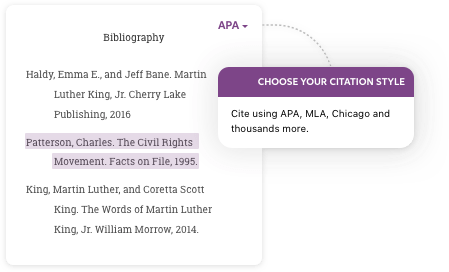Citing images may not be the first thing that comes to mind when working on a project, but it's an essential part of academic and professional integrity. Whether you’re a student, a researcher, or a content creator, giving credit where credit's due is important, especially when it comes to visual content. Images can enhance your work significantly, but using them responsibly means understanding how to properly cite them. In this post, we're focusing on how to cite images from Alamy, a popular stock photo website known for its vast collection of high-quality images.
Understanding Copyright and Usage Rights

Before diving into the specifics of image citations, it’s crucial to understand the concept of copyright and usage rights. Copyright protects the creator's rights over their work, and images are no exception. When you want to use an image from Alamy, you need to be aware of how the usage rights associated with it work.
Usage rights define what you can and can’t do with an image. Here are some key points to consider:
- Licensing Types: Alamy offers different licenses for their images, such as royalty-free and rights-managed. Royalty-free images allow you to use them multiple times after purchasing the license, while rights-managed images are subject to more specific restrictions.
- Attribution: Not all images require attribution, but if they do, you must follow the citation guidelines set by Alamy.
- Commercial vs. Educational Use: If you're using an image for commercial purposes (like advertising or resale), the requirements may differ from educational or personal use. Always check the license terms.
Before finalizing your project, ensure that you have the correct permissions and understand what you can do with the images you're using. Not only does this protect you legally, but it also shows respect for the creators’ work, fostering a community that values artistic contributions.
Also Read This: How to Sell Images on Alamy: A Comprehensive Guide for Beginners
3. Steps for Citing Images from Alamy
Citing images correctly is crucial to maintaining academic integrity and giving credit where credit is due. Here’s a simple guide to citing images from Alamy in your work:
- Identify the Image: Start by locating the image you want to use on Alamy. Take note of the image ID, as this will be essential for your citation.
- Gather Required Information: For proper citation, you’ll need specific details, including:
- Title of the image
- Creator’s name
- Year of publication
- Source (in this case, Alamy)
- Image ID
- Format Your Citation: Depending on your chosen citation style, format the details appropriately. Ensure to place the author's name first if required by the style guide.
- Integrate Into Your Work: Finally, include the citation in your work, either in the text (as a parenthetical citation) or in a reference list at the end of your document.
It's also a good idea to check Alamy’s licensing agreements for specific instructions on attribution if you're using the image publicly. Following these steps ensures you give credit to the creators while enhancing the credibility of your work!
Also Read This: Is Shutterstock Good for Selling Photos? Evaluating the Platform’s Effectiveness
4. Different Citation Styles Explained
When it comes to citing images from Alamy, the style you choose can change how your citation looks. Here’s a quick breakdown of the most commonly used citation styles:
| Style | Format |
|---|---|
| APA (American Psychological Association) | Author Last Name, First Initial. (Year). Title of the image [Format]. Source. URL |
| MLA (Modern Language Association) | Author Last Name, First Name. "Title of the Image." Alamy, Year, Image ID, URL. |
| Chicago Manual of Style | Author Last Name, First Name. Year. "Title of the Image." Alamy. URL. |
| Harvard | Author Last Name, First Initial(s). Year. Title of the image, Alamy. Available at: URL [Accessed Day Month Year]. |
Choosing the right style is important, and it often depends on the requirements of your institution or publication. Each has its nuances, so always double-check the guidelines specific to the style you are using. Remember, proper citation not only credits the original creator but also reinforces the credibility of your own work!
Also Read This: Citing Images from Alamy for Academic and Creative Projects
5. Examples of Citing Alamy Images
Citing images correctly is crucial for maintaining the integrity of your work and giving credit to the original creators. When it comes to images sourced from Alamy, a stock photo agency, here are some helpful examples for different citation styles.
- APA Style:
Last Name, First Initial. (Year). Title of the image [Description]. Alamy. URL of the image
Example:
Smith, J. (2021). Sunset over the mountains [Photograph]. Alamy. https://www.alamy.com/stock-photo-sunset-over-the-mountains-1234567.html - MLA Style:
"Title of the Image." Alamy, year, URL.
Example:
"Sunset over the Mountains." Alamy, 2021, https://www.alamy.com/stock-photo-sunset-over-the-mountains-1234567.html - Chicago Style:
Last Name, First Name. Year. "Title of Image." Alamy. URL.
Example:
Smith, John. 2021. "Sunset over the Mountains." Alamy. https://www.alamy.com/stock-photo-sunset-over-the-mountains-1234567.html
Always ensure you follow the specific guidelines of your chosen citation style, as formats may vary slightly. By providing detailed citations, you enhance the credibility of your work and respect the artistic contributions of the photographers behind the images.
Also Read This: How to Clear Queued Photos on Alamy: A Step-by-Step Tutorial
6. Common Mistakes to Avoid
Citing images from Alamy—or any source for that matter—can be tricky if you don’t pay attention to the details. Here are some common mistakes to avoid to ensure your citations are spot-on:
- Using Incomplete Information: Always check that you have all required details. Missing author names, titles, or publication dates can lead to incomplete citations.
- Neglecting the URL: Don’t forget to include the direct URL to the image. It allows others to find the source quickly, making your work more transparent.
- Incorrect Formatting: Each citation style has its specific rules regarding punctuation and formatting. Be consistent with your choices throughout your document.
- Forgetting Permissions: Alamy images typically require licensing or permissions for usage. Make sure to read the terms of use thoroughly before you include images in your work.
- Mixing Citation Styles: Stick to one citation style throughout your project. Mixing them can confuse readers and make your work appear unprofessional.
By steering clear of these pitfalls, you’ll ensure that your citations are accurate, reliable, and helpful to anyone who references your work. Remember, attention to detail is key!
How to Cite an Image from Alamy Correctly in Your Work
When using images sourced from Alamy, proper citation is crucial to avoid plagiarism and give credit to the original creator. By adhering to the correct citation guidelines, you not only enhance your work's credibility but also respect the intellectual property of the artists and photographers.
To cite an image from Alamy correctly, follow these steps:
- Gather Image Details: Before you cite, take note of the following information:
- Photographer/Artist's Name
- Image Title or Description
- Year of Creation
- URL or Image Link
- Choose the Correct Citation Style: Depending on your field or preference, you might use APA, MLA, or Chicago styles. Below are examples for each:
| Citation Style | Example Format |
|---|---|
| APA | Artist, A. A. (Year). Title of work. Website Name. URL |
| MLA | Artist's Last name, First name. Title of Work. Year, Alamy, URL. |
| Chicago | Artist Last Name, First Name. Year. Title of Work. Alamy. URL. |
After composing your citation, ensure it is formatted correctly and included in your bibliography or works cited page as per the style guidelines.
Conclusion and Best Practices
To ensure you are citing images from Alamy correctly, always double-check your chosen citation style for specific requirements, keep accurate records of your image sources, and attribute the creators properly to uphold academic integrity.
 admin
admin








